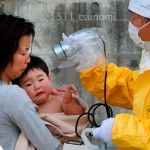Slowly the facts are emerging on what went wrong at Fukushima from a crisis PR point of view after the March 11th earthquake and tsunami. It seems to be a text book what-not-to-do in crisis communication.
It is as if nothing was learned from the oil spill at the Deepwater Horizon oil rig operated by BP off the coast of Louisiana in the Gulf of Mexico on April 20th, 2010.
The one-two-three of crisis communications is:
- Prepare a plan.
- Practice it at reasonable intervals with desktop sessions.
- Practice it at reasonable intervals with real-time sessions.
The greater the danger, the greater the thoroughness required with the above steps. According to reports, either these didn’t happen or were grossly insufficient.
The upshot? It seems that Japan is now considering phasing out nuclear power. According to the NYT, the government-appointed  investigative panel made the following reports in December, while presenting a 500-page interim report into the events at Fukushima.
investigative panel made the following reports in December, while presenting a 500-page interim report into the events at Fukushima.
- First, the authorities grossly underestimated the risks.
- Second, workers had not been trained and lacked a clear manual to follow
- Third, a communications breakdown meant workers had no clear picture of what was happening.
- Fourth, the government failed to make use of information on radioactive contamination to warn local towns and direct evacuations which allowed people to be exposed to harmful radiation.
As we have often said, the disaster in crisis communications can have greater consequences than the event.
To read more on Fukushima, click the Fukushima tag.





